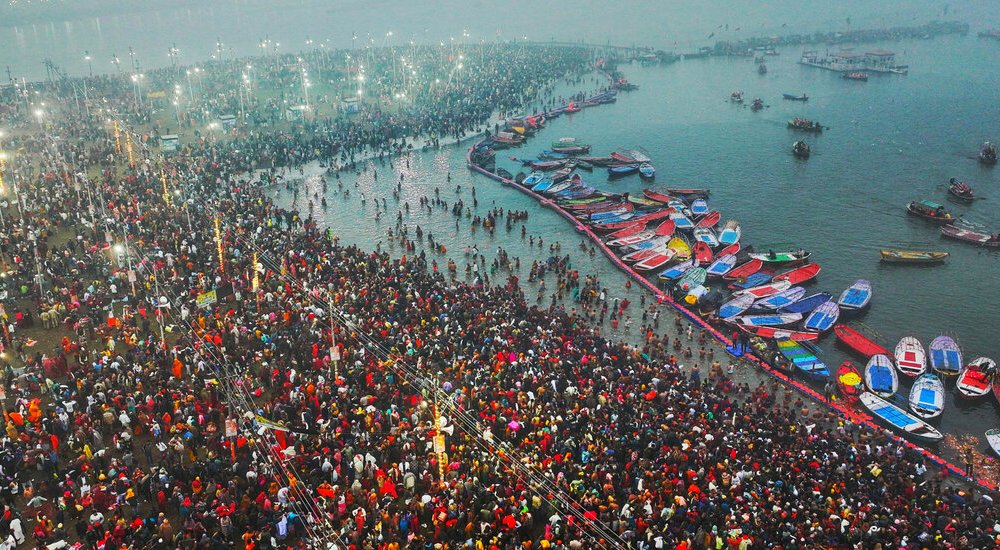The holy baths are preceded by processions involving people singing and dancing in vibrant attire, in ornately decorated chariots and wielding ceremonial spears, tridents and swords. To participate, people travel from all over India and the world to the confluence of the Ganges and Yamuna rivers, a sacred site that is also said to be the end point of a mythical third river, the Saraswati.
The timing of the festival, which this year ends on Feb. 26, is based on the astrological alignment of the sun, the moon and the planet Jupiter, which takes around 12 years to orbit the sun. Smaller versions of the festival happen in one of three other Indian cities — Haridwar, Nashik and Ujjain — roughly every three years.
How big is the festival?
The scale of the Maha Kumbh Mela is astonishing. The last one, in 2013, drew 120 million people in Prayagraj, according to a government estimate. An intermediate festival in 2019, though less significant religiously, attracted 240 million people.
This year, the city, home to about 6 million residents, is preparing to host 300 to 400 million people, government officials said. In preparation, the state has built a temporary campsite across a 10,000-acre area, with tens of thousands of tents and bathrooms, roads, parking lots, water and electricity infrastructure and thousands of security cameras and drones.














































